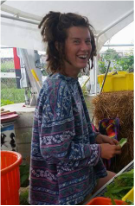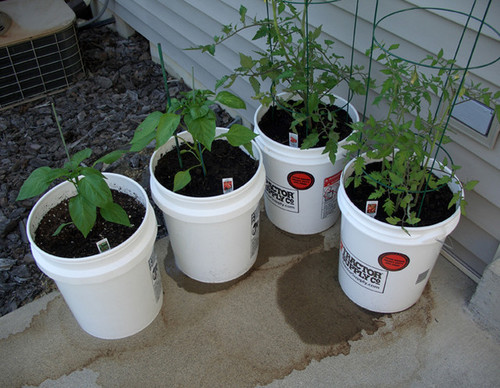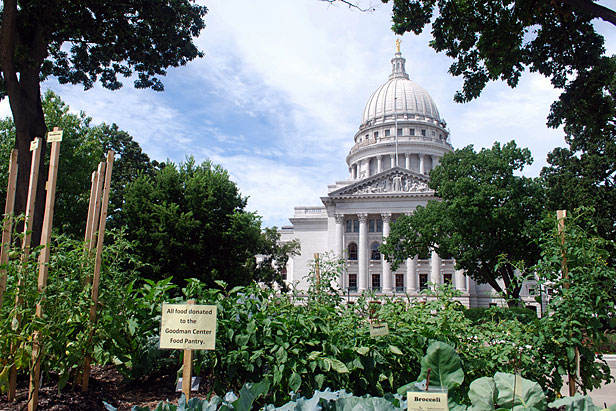One of the best parts of winter is having time to read and plan for next year’s garden. I love curling up with a cup of hot tea and a great gardening book. There are literally hundreds of good books out there, read as many as you can. I thought I would tell you about a few of my favorite books, the ones I have purchased and use over and over again.
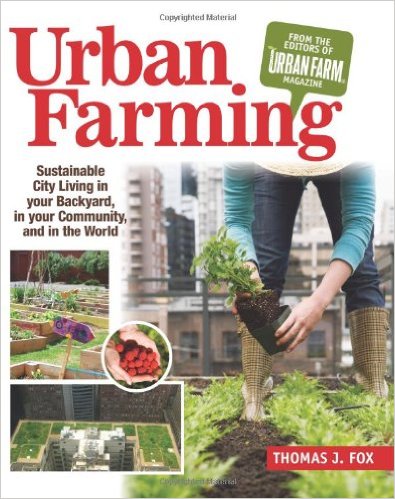 photo courtesy of Amazon.com
photo courtesy of Amazon.com
URBAN FARMING: SUSTAINABLE CITY LIVING IN YOUR BACKYARD, IN YOUR COMMUNITY, AND IN THE WORLD. By Thomas J. Fox
This is a great book for any gardener, beginner or experienced veteran. It introduces readers to converting small spaces into valuable gardening options. Author Thomas J. Fox provides a solid foundation and justification for urban farming. The book also includes easy do-it-yourself plans to get started, and attempts to answer all the questions readers might have about urban gardening. It has a strong focus on sustainability practices to also reduce your carbon footprint while you are lowering your grocery bills by growing your own food. It is a very handy reference and my copy is well-worn.
 photo courtesy of Amazon.com
photo courtesy of Amazon.com
THE MARKET GARDENER: A SUCCESSFUL GROWER’S HANDBOOK FOR SMALL-SCALE ORGANIC FARMING. By Jean-Martin Fortier.
Have you ever considered becoming a small-scale farmer? Author Jean-Martin Fortier may just inspire you to consider it. His book lays out all the basics in running a small-yet profitable, farm operation. But do not let the title intimidate you. This is a great read even if you just want to improve your small urban garden. He provides real information from his own farm that is invaluable to gardeners on any scale. He includes charts on planting that I love and refer to every spring. He also has great insights into garden tools that many people would be unfamiliar with, yet can make a real difference in the time and energy you put into your garden. If you want to increase your yields, expand your garden or are considering a small-scale farm, this book is for you. I learn something new every time I read it and I use it as a reference guide often. I love this book and highly recommend it.
 photo courtesy of Amazon.com
photo courtesy of Amazon.com
THE NEW ORGANIC GROWER: A MASTER’S MANUAL OF TOOLS AND TECHNIQUES FOR THE HOME AND MARKET GARDENER. By Eliot Coleman.
This is the first of three books I am recommending by author Eliot Coleman. He is a farmer from Maine and this book published originally in 1989 is a must read for anyone who is interested in organic gardening. While his approach is designed for commercial small-scale farming, you do not need to be a farmer to gain incredible knowledge from Coleman. The book is full of great information from crop rotation to winter gardening. One of the things I love most about this book is learning the techniques Coleman has found successful on his own farm. He shares his success stories and even a few failures. He also includes information on tools he finds invaluable and that is very helpful for home gardeners who are looking to expand their tool knowledge.
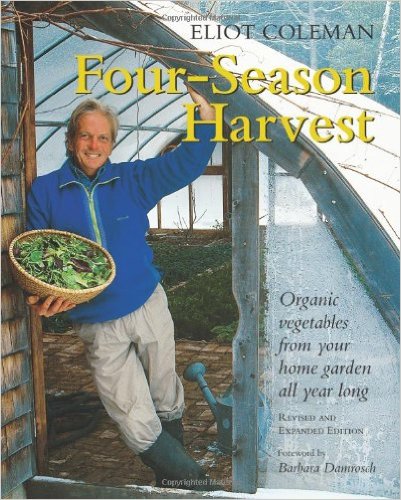 photo courtesy of Amazon.com
photo courtesy of Amazon.com
FOUR-SEASON HARVEST: ORGANIC VEGETABLES FROM YOUR HOME GARDEN ALL YEAR LONG. By Eliot Coleman.
In this book, author Eliot Coleman introduces the concept of gardening all year-long, including the long cold Maine winter. He travels to France to explore the way the French capture the winter sunshine to garden during the winter. He shares weather patterns and sunshine information to debunk old perceptions about what can be grown during winter. Coleman introduces new ideas about the feasibility of growing and harvesting crops year-round. After reading this book, you will be gazing at your garden with new eyes and plans for the future.
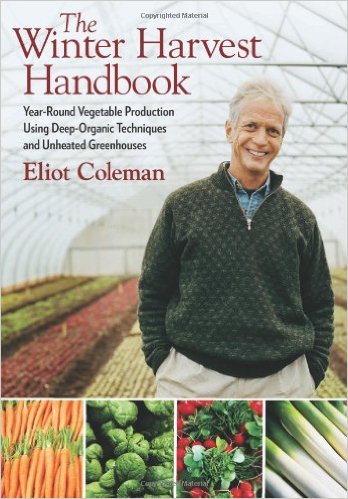 photo courtesy of Amazon.com
photo courtesy of Amazon.com
THE WINTER HARVEST HANDBOOK: YEAR-ROUND VEGETABLE PRODUCTION USING DEEP-ORGANIC TECHNIQUES AND UNHEATED GREENHOUSES. By Eliot Coleman.
This book expands on the knowledge taught in Coleman’s previous books. It includes detailed techniques for winter gardening. This book focuses on growing fresh, organic produce using customized greenhouses. It provides details on greenhouse construction and maintenance, planting and harvesting schedules and crop management. Coleman’s research and his experimentation with over thirty crops on his farm provide reader’s with valuable information to expand their own garden production. He also includes marketing techniques for those interested in farming on a greater scale. This book is an incredible resource for gardeners who want to extend their growing season. I have been studying this book for about six months. If you are interested in growing more food for your family or starting your own farm business, this is a vital source of information. Eliot Coleman will inspire you to rethink what you can accomplish.
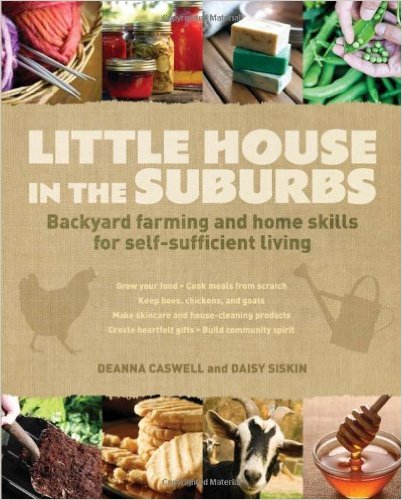 photo courtesy of Amazon.com
photo courtesy of Amazon.com
LITTLE HOUSE IN THE SUBURBS: BACKYARD FARMING AND HOME SKILLS FOR SELF-SUFFICIENT LIVING. By Deanna Caswell and Daisy Siskin.
This is a great quirky book that has gardening information but also includes great tips on raising backyard animals such as bees, chickens and goats. In addition, the authors have recipes for dishes and also how-to’s on making many household items. If you are looking for ways to simplify your purchases and make more of the products your family currently uses, this is a great reference for you. The writing style is friendly and light in nature and I appreciate the author’s styles. They compliment each other, yet both bring great individual information to the book. This is a fun read and also inspires me to get creative during the winter with a few new recipes or ideas for my home.
Your local library is a great source for gardening books, but when you find one you really love, buy it. The gardening books I have are a constant source of knowledge, inspiration and motivation for me. They are now like good friends that I depend on. Happy winter reading!
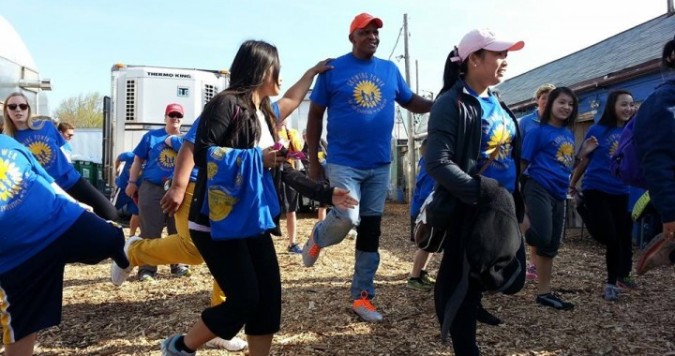
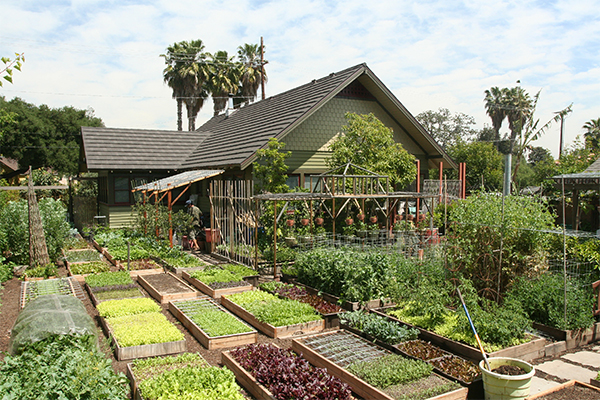
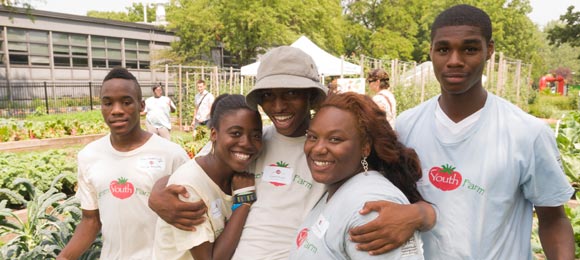
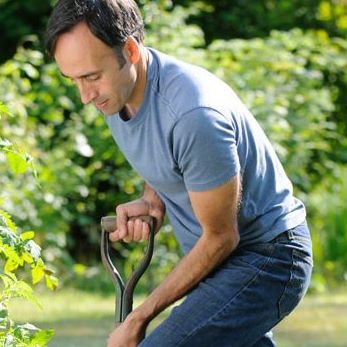 photo courtesy of Roger Doiron-Facebook
photo courtesy of Roger Doiron-Facebook photo courtesy of Jesse DuBois-Facebook
photo courtesy of Jesse DuBois-Facebook
